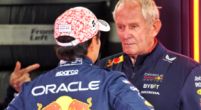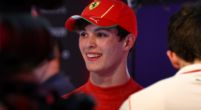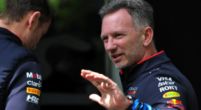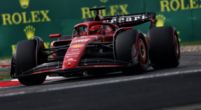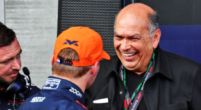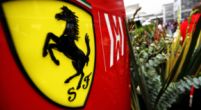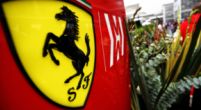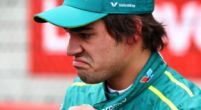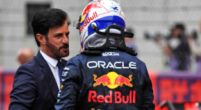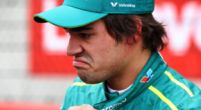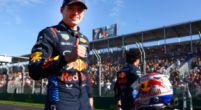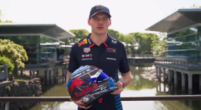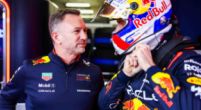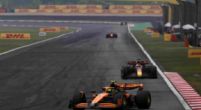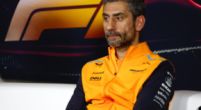F1 News

F1 2018 review - Transform from a rookie to a hero in Formula 1!
A new season means new opportunities in the Formula 1. Rookies like Charles Leclerc and Sergey Sirotkin are working hard to make a name for themselves right now, but in the F1 game, you can work to the top yourself. Codemasters gave GPblog a copy of the game before release so we can tell you what to expect when you start the new season as a rookie!
Beginnings
Like in the previous games, you start by choosing your team in F1. The lower the team is in the championship standings, the lower the expectations. For example, if you start at Toro Rosso, you don't have to do much more than beating your teammate and both Williams cars.
Besides just beating your teammate, you can turn more heads by choosing a different rival. The better this rival is, the better it is for your reputation when you beat him in a race. But don't expect to beat Lewis Hamilton in your first season at a B-team. However, if you dó beat him in that scenario, your popularity will grow massively, and so will the score from your team.
If the team is supporting you and if you're not complaining about the engine in your car, you could be expecting quicker and cheaper upgrades in a certain branch of the development tree. If you complain too much about the lack of power, your team won't be as compliant, and upgrades could take longer to install or cost more points. So, think about what type of person you want to be in interviews; a complainer like Fernando Alonso, or a 'bwoah' merchant like Kimi Raikkonen.

First steps
If you've gotten the hang of your team, the real work begins: doing tests, qualifying rounds and Grands Prix. The more test programs you go through in F1 2018, the fewer points you get to buy upgrades. The first completed program gives you 50 points, the second forty and so on. The last program that you go through will yield zero points, but could possibly provide you with some useful data. So, think about what you feel like you're already comfortable with, and what could potentially blow up your engine.
That is because just like in the real Formula 1, the number of available parts has also gone down in the game this year. Only three (and in the case of the MGU-K, CE and ES only two) power units are available for a whole season. If you want to change your gearbox after four races, you'll get a ten-place penalty for it. An advantage is, however, that test boxes have been introduced in this year's game. In the first two training sessions you drive with a gearbox that can be changed at will. That's why it's important that you stuff as many training programs as possible in those sessions to save your actual gearbox for racing.

Flat-out
When your memory of a circuit has been refreshed after some practice, the real work can start: racing. In that area, a lot has changed compared to F1 2017. The cars themselves have a lot more grip and are therefore tighter on the road. Taking a turn at higher speeds is certainly possible, but it could cost you; the curbs are more realistic than ever before.
In previous games, you could cut corners easily and drive over the kerbstones without a problem in the world. Try that in F1 2018, and you'll fly off the track. If you overshoot a corner even further and you end up behind the kerb on the extended brake-zone, you can say goodbye to that timed lap. Tackling a corner well is rewarded and is therefore also worth studying, as carelessly pounding the kerbs is mercilessly punished.

Finetuning
That is why it has become more important to set up a car to your strong and less strong (or even weak) points. In a Mercedes, you should probably have raw speed, while with a Red Bull you'll have to emphasize on grip to win back some time in the corners. Sure, Hamilton and Valtteri Bottas will zoom past you on the Bahrain straights, but you'll creep back up to them in the corners.
The free practice sessions have therefore not only become important because of the training programs, but also for finding your ideal balance of the car you're in. You get the gearbox as a present and with a few upgrades to improve reliability of the engine parts, you shouldn't have to worry about an exploding turbo. Have you found a good setup, then it really pays off to keep it for the next season.

Wetwork
Even with your perfect setup though, there are no guarantees in F1. Besides a few circuits in the desert, there is always a chance of rain. Where previously rain was always received with a lot of cheers (after all, the AI always drive safer in the rain), it will now no longer be the case. Whoever opts to play without traction control or other training wheels, will really have to adjust their driving on a circuit like Monaco.
That's because rain in F1 2018 is true hell. Pumping the gas has to be done gingerly as wheel spin will otherwise give you a laughable amount of grip, and tackling corners has to be done extremely accurately. If you swing too much from left to right with a steering wheel or a controller (or if you really want to torture yourself, a keyboard, we've tried it and we really don't recommend that), then you just slide into the gravel or slam into a wall. Driving in the rain is, just like in real life, a true art.
Auto or manual?
It's harder to find your balance, rain now causes tears: has nothing become any easier? Certainly, flooring the throttling pedal and zooming past an opponent. With the new ERS system, you as a driver still have a possibility to blow past slower drivers without losing too much time. But this part also demands more of the driver.
Just like with a lot of things, the ERS system can be set to automatic. The game then determines for you when it is useful to convert the stored energy into power and your lap times will always be close to each other because of that. But it can also be different.
If you put it on manual, you can determine the consumption while you drive. For example, in a normal lap you charge the batteries and in a lap before diving into the pits for new rubber you give it everything and gain a few tenths. The AI also does this, so occasionally, you'll see a big advantage disappear. And if you want to overtake another car, it may just be that the driver in question is defending his spot with a charged battery. Climbing one spot can therefore suddenly take a few laps, which can have a significant impact over an entire race.

Bwoah
Slowly getting better as a driver is therefore both valuable and an obligation in F1 2018. And if you have driven a race for about an hour, then just like in reality you get a microphone under your nose with the question if you could not have performed better . As mentioned, your answer can have positive or negative consequences, but the amount of time you get to read the question again and to view the answers is nil. That the interviewer is a female David Coulthard with a thick Scottish accent also does not help for a meter, so you actually choose a good answer. With all its consequences.
Not only the voice and the questions of the interviewer are a point of criticism, also the graphic design of her character and some other people on and around the grid could have done better. Yes, you recognize Valtteri Bottas, Kimi Raikkonen and call them all back immediately. But the synchronization of the mouth when talking (in the case of the interviewer) is, to put it mildly, not really done nicely. Can you expect a game that revolves around racing? Maybe not, but if you realize that it has been a part of the Formula 1 games for a long time, and it always makes you stumble. If you use it as a gamemaker, make sure it looks neat.

(Bittersweet) symphony
The voice of the interviewer is still unbearable, but a different sound aspect hás been addressed by Codemasters after criticism of the previous game: the sound of the cars. The gagging of GP2 cars in F1 2017 has been replaced by much more realistic sounding F1 engines with unique features. The zooming noise of the Mercedes, the grinding power of Ferrari and the crackling engine of Honda. Well, the latter could have been just a bit better, but you can immediately distinguish the different engines.
Speaking of distinction: the liveries of the cars are correct this time at the launch of the game. No wrong colour text on the Haas or a misplaced sticker. And even though the people in the game still don't look great, the graphic aspect of the cars themselves are spot on. Shiny body, the reflection of sunlight and a big fat Halo right in front of you when you use the cockpit view.
If you want realism, you can leave the pillar right there, in the middle of your screen. But if you find it difficult enough to race without having a brace covering half of your screen, you can easily turn it off. Or choose a different camera angle. We do advise to first get a feel for the car, since the cars in F1 2018 also feel a lot wider than before. That's because they are, and you will instantly notice it on a circuit like Monaco. The tunnel feels much narrower, which is why we urge you to get a view practice laps in before switching to cockpit-view in the Principality.

Rise of a star
Have you got a feel for the car and have you managed to keep the car in as many pieces as possible for a season? Then the story starts again in the next season. You might stick to the same team, but maybe another team has suddenly taken more steps in terms of the chassis or the engine. Changing seats is much more lucrative in F1 2018 and is encouraged more because sometimes, the grass can be a lot greener at a different team.
Will you pull a Daniel Ricciardo and want to go away from the pressure of Max Verstappen and go elsewhere, or will you end up as a Pascal Wehrlein and get snubbed from all teams? A historically successful team like McLaren can take a nose-dive from one season to another in terms of position, while a team like Toro Rosso can shoot up the ladder by being the only team with a Honda engine (in the game! We know about Red Bull next season, calm down). Just like in the real Formula 1, it takes some luck to have success, but it especially takes a driver with qualities. And that's where you come in as a racer.

In conclusion
More realism on the circuit, a few criticisms regarding the elements around it. In F1 2018 you have the feeling that you're improving as a driver and you get the feeling that you really get to know a circuit and car. We would not be surprised if the interview component is revised (from fifteen seconds to at least twenty, or give her a different voice (And no, not Paul di Resta, it will be even more unbearable then)) because it's quite an important element of the game and it just doesn't work nicely.
If you have the time and ambition to become a better driver during a season, then F1 2018 will certainly offer you that. Start small and work yourself up the ladder. No one has entered Formula 1 at Mercedes and instantly become a champion that same season. You can only get better if you put the time in and that is exactly what the new F1 game expects from you.



